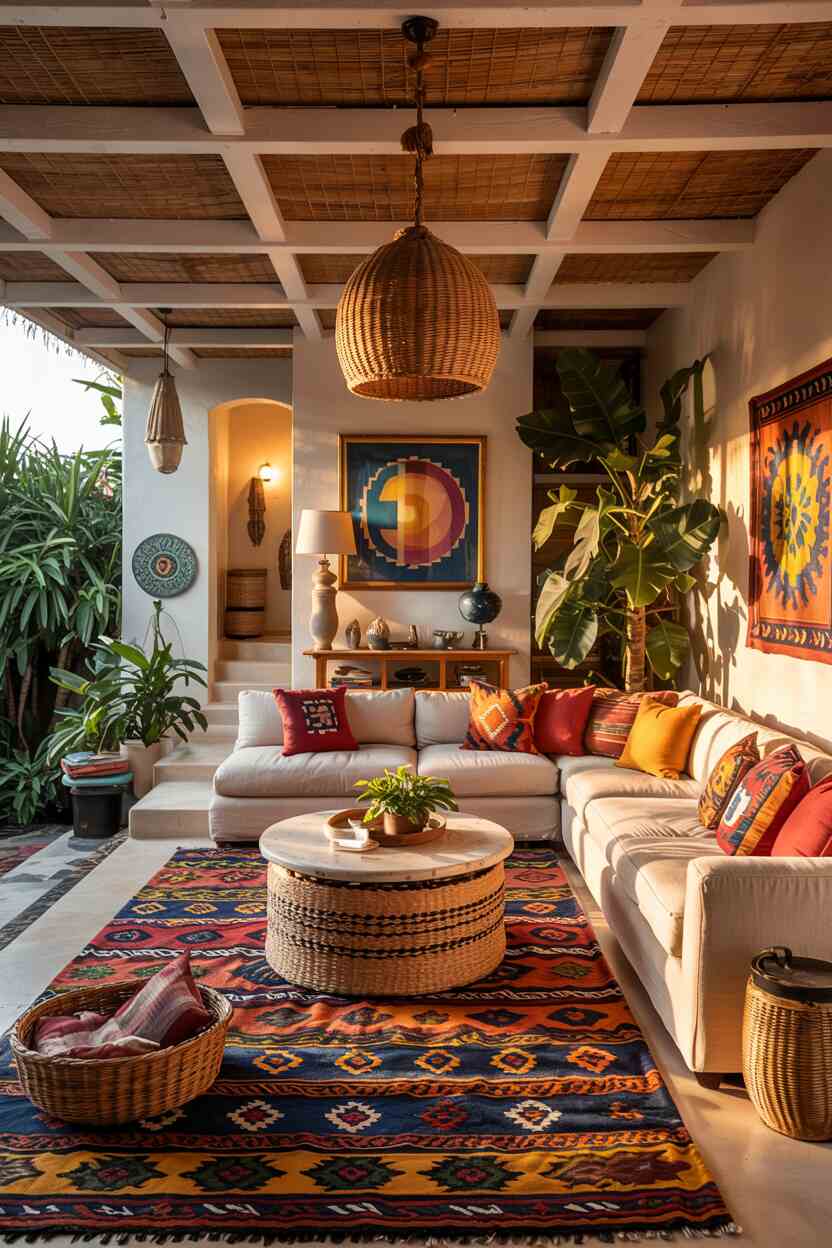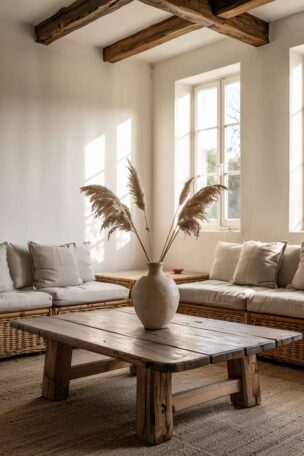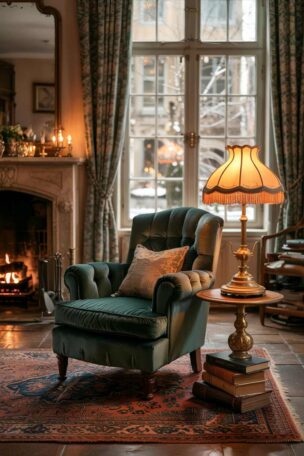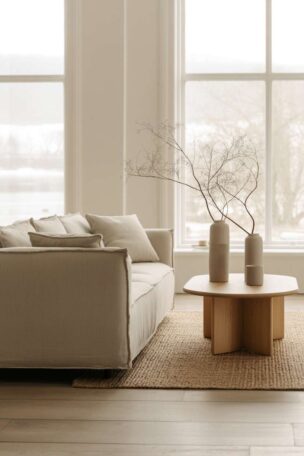Bohemian interior design is one of the most expressive and personally reflective approaches to home styling.
For those wondering what is bohemian style interior design, it is, at its essence, a carefree aesthetic that celebrates individualism, cultural diversity, and artistic expression through layers of texture, pattern, and meaningful objects.
Unlike minimalist or modern design approaches that adhere to stricter guidelines, bohemian design thrives on creative freedom.
It makes spaces feel simultaneously inviting, vibrant, and deeply personal.
For those drawn to authenticity and self-expression in their living spaces, the bohemian style offers a refreshing counterpoint to more structured design philosophies.
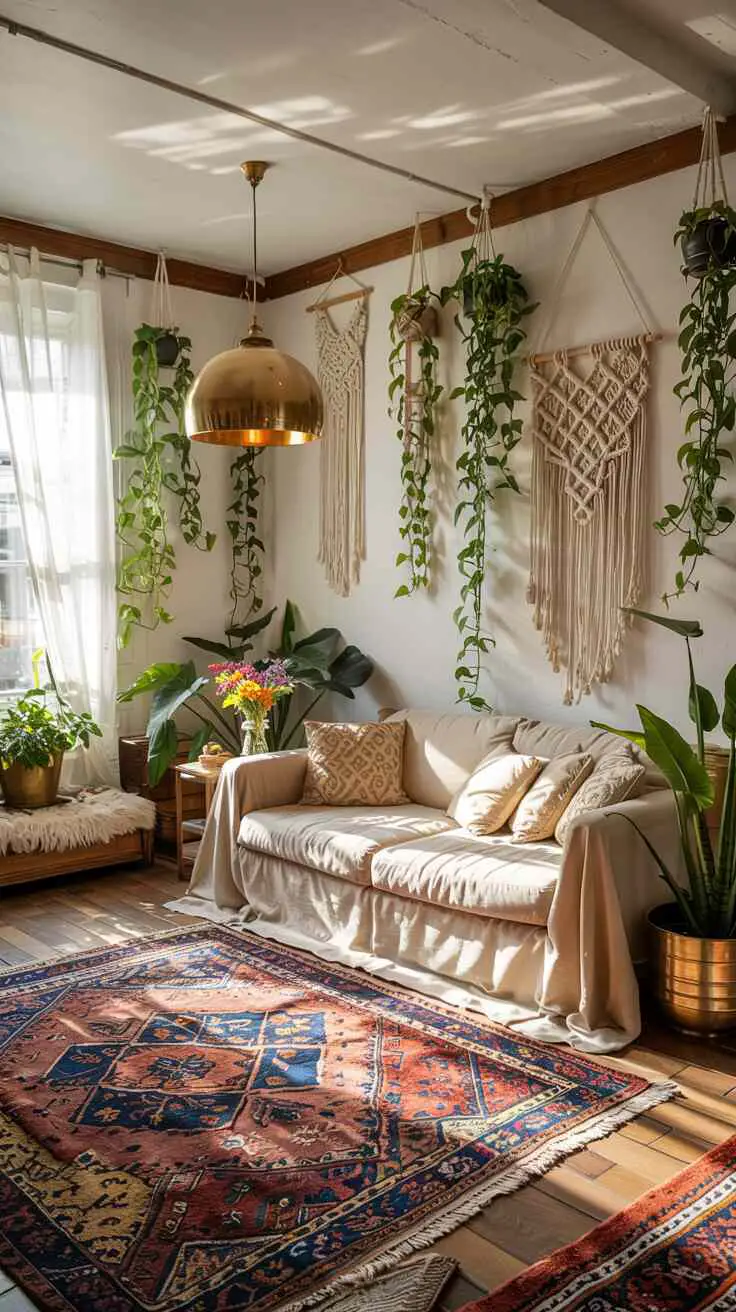
The Essence of Bohemian Design
The Historical Roots
The term “bohemian” originates from the French word “bohémiens,” initially used in the early 1800s to describe the Romani (gypsy) population of Paris, whom the French mistakenly believed came from Bohemia, a historical region in today’s Czech Republic.
Over time, the term evolved to characterize a free-spirited, unconventional lifestyle that rejected traditional societal norms and embraced artistic pursuits.
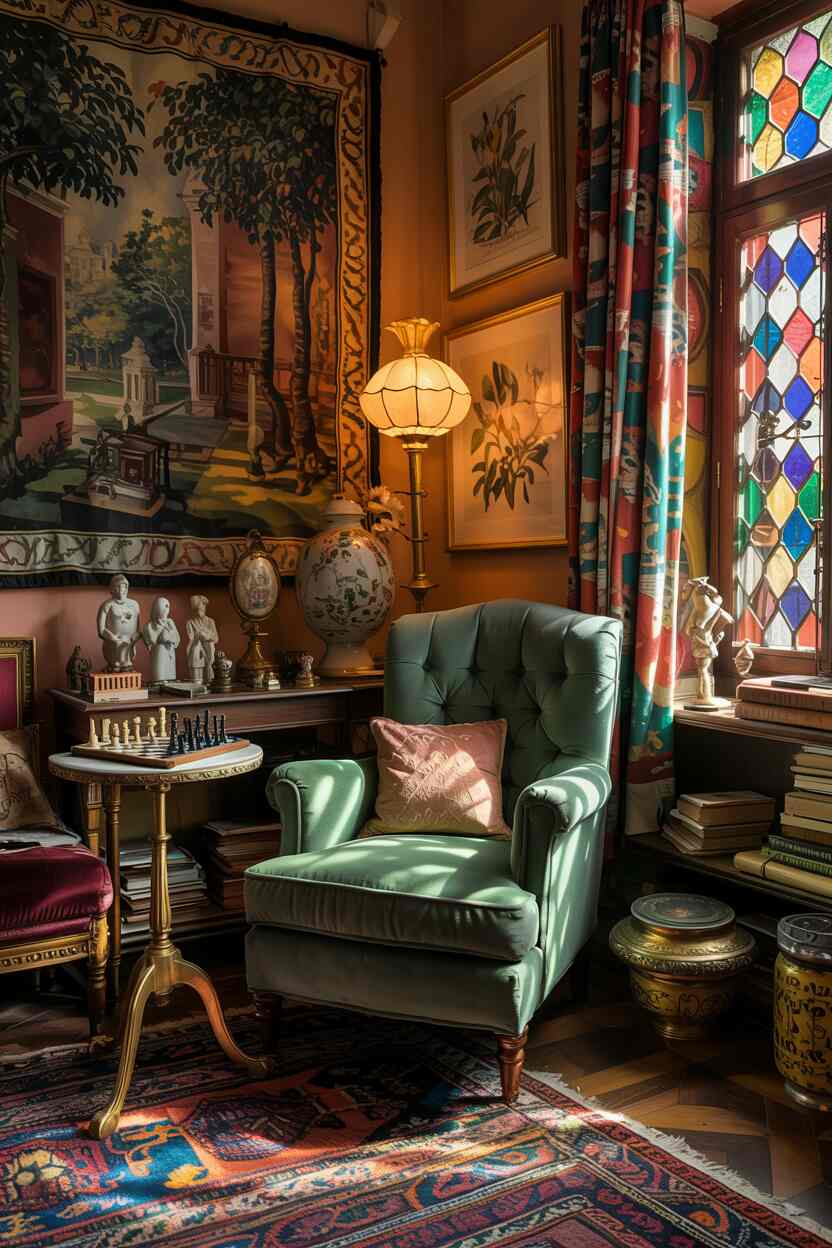
By the mid-19th century, the term had come to describe artists, writers, and intellectuals who lived unconventional lifestyles focused on creativity rather than material success.
This philosophy has deeply influenced what we now recognize as bohemian interior design—spaces that prioritize personal expression, comfort, and an appreciation for diverse cultural influences.
Philosophy Behind the Style
Today’s bohemian interior design philosophy remains rooted in nonconformity.
Unlike other styles that follow specific rules, bohemian design is defined precisely by its lack of rigid structure.
It’s ruled by self-expression, making it perfect for those who want their homes to feel like genuine extensions of themselves.
The nesting phenomenon observed in recent years has significantly impacted interior design trends, with the comfortable yet effortlessly chic bohemian style emerging as a popular choice for those looking to infuse their spaces with warmth and character.
This design style aligns perfectly with the current trend toward creating eclectic and personality-driven spaces.
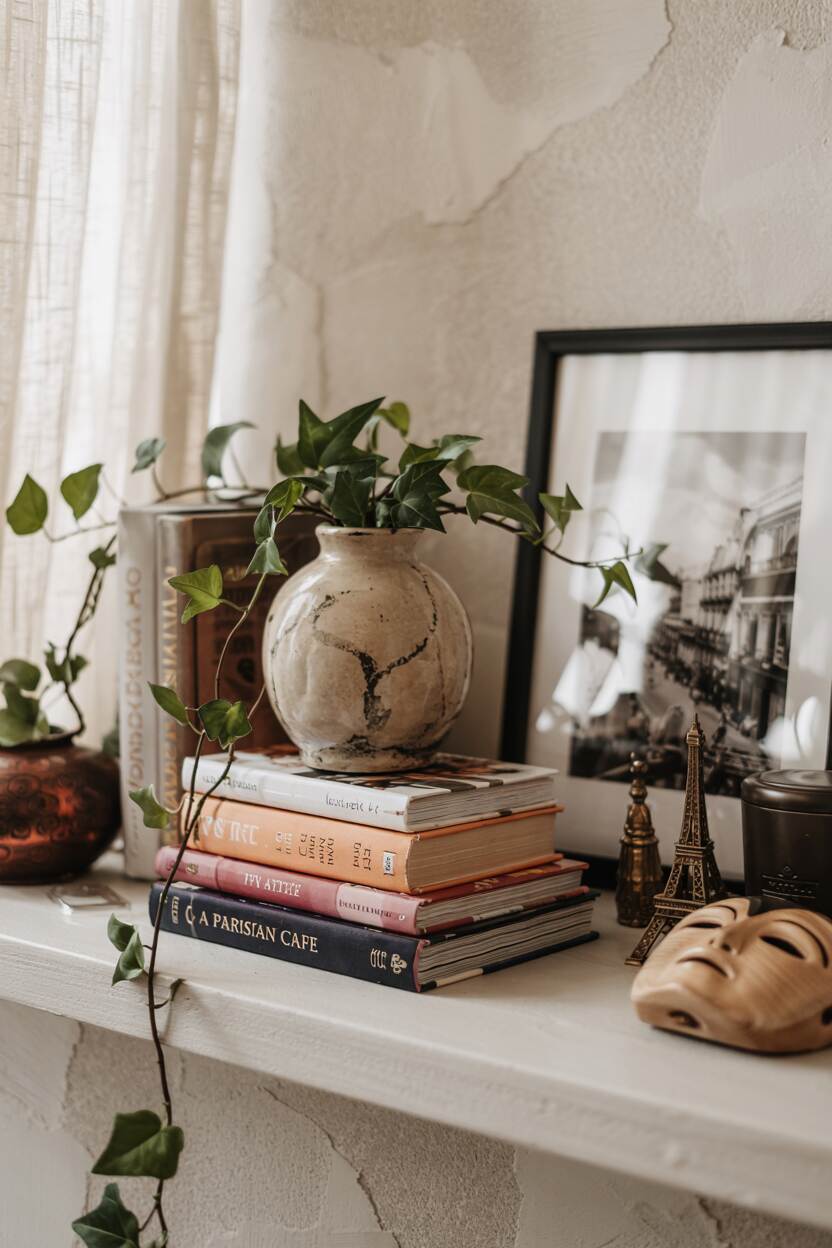
Key Elements of Bohemian Interior Design
Color Philosophy
Bohemian interior design reveals a liberated approach to color that distinguishes it from more restrained aesthetics. Unlike design styles that adhere to strict color schemes, Bohemian interiors embrace variety and contrast.
The color palette in bohemian design can range dramatically—from rich jewel tones like emerald, amethyst, and sapphire to vibrant orange, pink, and turquoise hues often grounded by earthy neutrals.
This flexibility allows for personal expression while maintaining the style’s characteristic warmth. White walls sometimes serve as a canvas for displaying colorful artwork and textiles in more boho-chic interpretations.

Pattern and Textile Mixing
Pattern mixing is fundamental to achieving authentic bohemian style. Traditional bohemian patterns might include ikat prints,
Persian motifs, paisley, suzani, and tie-dyed fabrics that wouldn’t conventionally be paired together but somehow work harmoniously in bohemian spaces.
Interior designers emphasize that mixing matching and non-matching patterns alongside complementary and contrasting colors and textures is essential to creating a dynamic bohemian look.
The key is finding a common element—a color, scale, or theme—that ties diverse patterns together while embracing their differences.

Furniture Choices
The furniture selections in bohemian spaces reflect both comfort and character. Bohemian furniture typically sits low to the ground, crafted from natural materials and adorned with plush pillows and throws that invite relaxation.
The style embraces diversity in furniture heights and colors to create casual, inviting arrangements.
Chaise lounges, rattan chairs, mid-century coffee tables, floor cushions, and Moroccan poufs have become staples of bohemian living spaces.
Vintage and second-hand furniture items are prized in bohemian interiors, adding authenticity and history to the space.
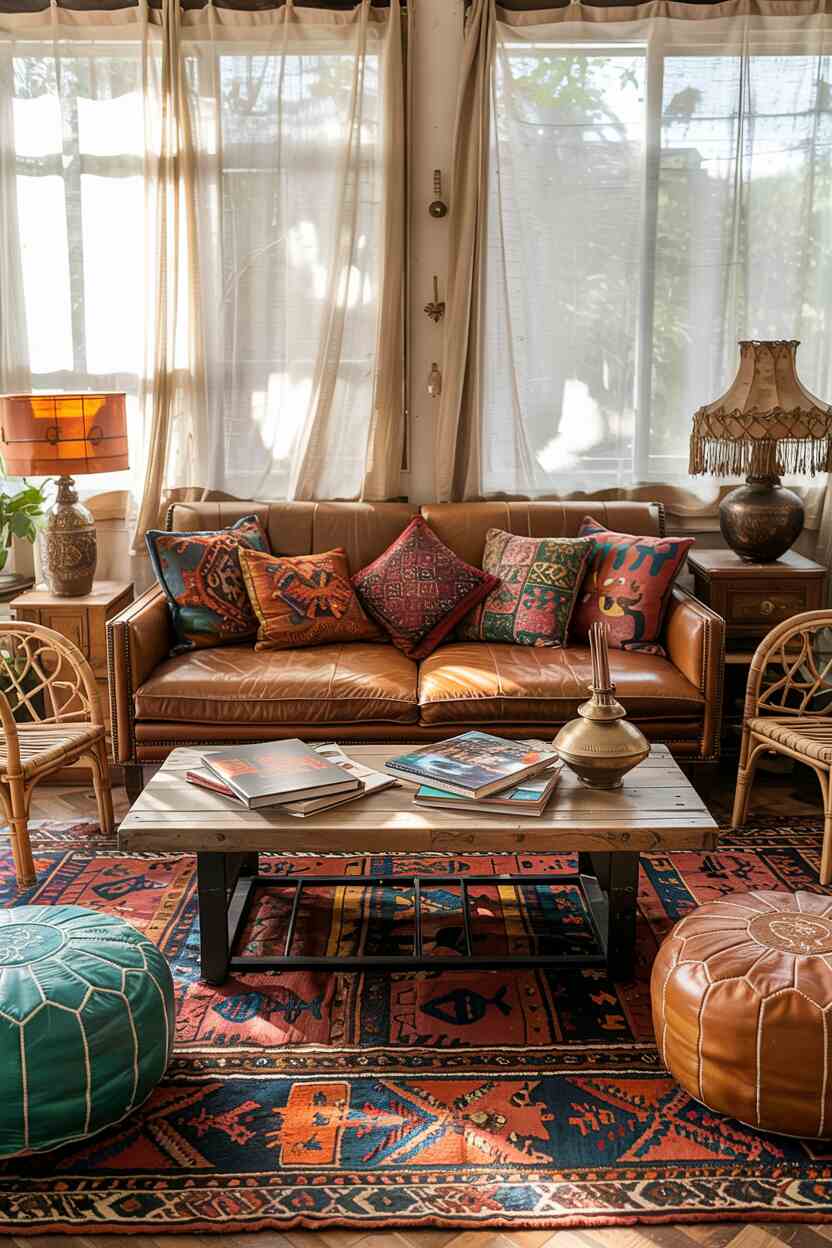
Natural Elements
Natural materials play an essential role in achieving the bohemian aesthetic.
Designers note, “I love adding natural materials like wood, rattan, and jute, which brings an organic and grounding element to the space and enhances its laid-back and relaxed vibe.”
These materials contribute to the earthy, organic quality of bohemian interiors while adding textural interest.
Plants and greenery are essential elements in bohemian interiors.
Succulents, trailing pothos, monstera, and other houseplants add vibrancy while keeping spaces fresh and alive. Incorporating abundant plant life reinforces the style’s connection to nature and organic elements.

Global Influences
Global influences are prominently featured in bohemian décor, with items like Cambodian Ikat textiles, Turkish kilim rugs, Moroccan lanterns, Indian block prints, and African mudcloth being common features.
These multicultural elements reflect the style’s embrace of diverse traditions and aesthetic approaches.
The incorporation of travel souvenirs, handcrafted items from around the world, and objects with cultural significance adds layers of meaning to bohemian interiors.
Each piece tells a story, contributing to the overall narrative of the space and its inhabitants.
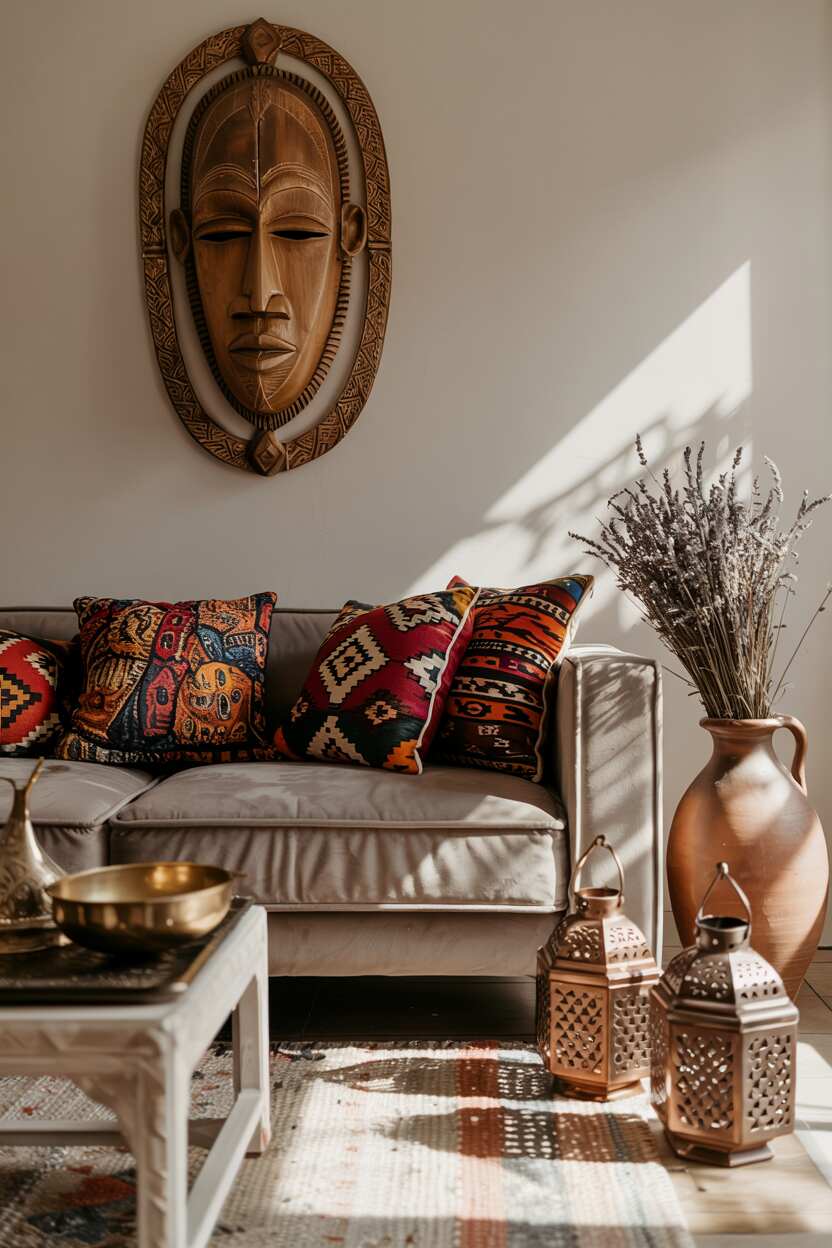
Bohemian Style Variations
While bohemian design is unified by its free-spirited approach, several distinct variations have emerged, each with its interpretation of the core aesthetic:
Bohemian Zen
Bohemian Zen represents a more balanced and subdued take on the traditional bohemian style.
This variation is particularly well-suited for bedrooms, where it can create a tranquil sanctuary.
The Bohemian Zen approach focuses on clean lines, balanced colors, cozy layers, and straightforward decor with texture and character.
This style maintains the bohemian spirit while incorporating elements of minimalism for a more peaceful atmosphere.

Modern Bohemian
The Modern Bohemian style begins with a sleek, contemporary base and then builds character through layered textures.
This variation might feature bold, eclectic artwork against clean, simple walls or multiple bohemian rugs layered over modern flooring.
Modern Bohemian successfully bridges the gap between contemporary design and the more traditional Bohemian aesthetic, making it accessible to those who appreciate both styles.
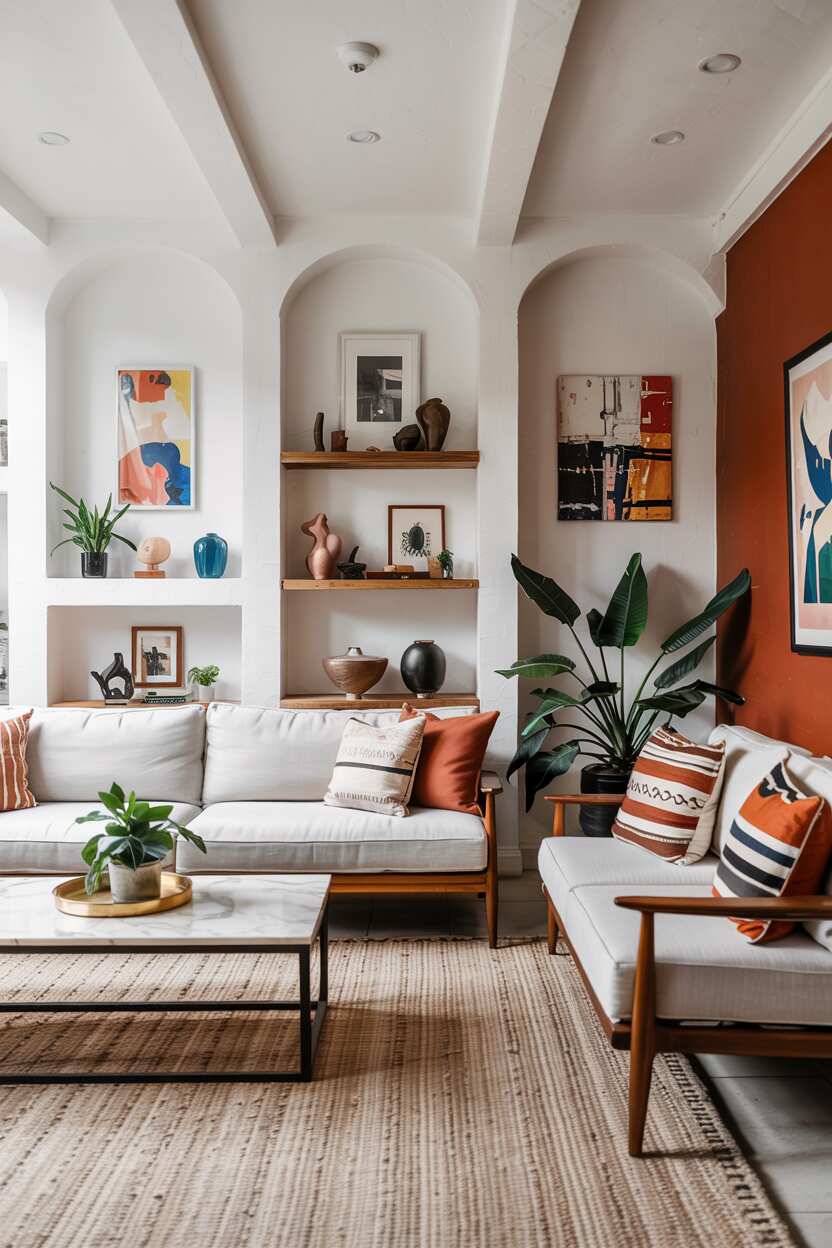
Cultural Variations
Bohemian design comes in many styles, ranging from boho beach vibes to European influences to the retro, 70s-inspired aesthetic.
Each variation draws inspiration from different cultural contexts while maintaining the bohemian principles of freedom, self-expression, and eclecticism.
Boho beach incorporates coastal elements like driftwood, shells, and a lighter color palette.
European boho often features more antique furniture and classical references, while 70s-inspired bohemian celebrates vintage elements from that era, including macramé, fringe, and earthy color schemes.
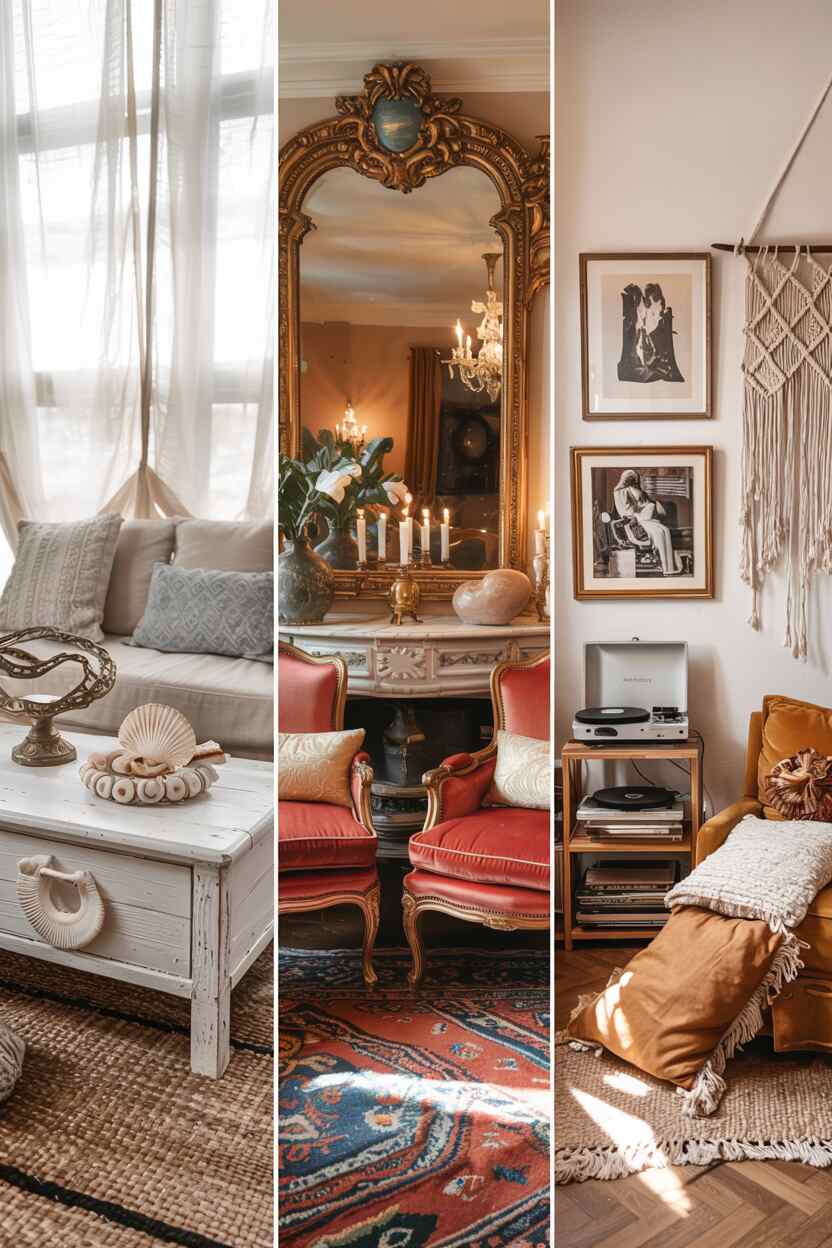
Creating Your Bohemian Space
Embracing Pattern Mixing
Pattern mixing is fundamental to Bohemian design. Interior designers recommend incorporating matching and non-matching patterns, using complementary and contrasting colors and textures throughout the space.
Feel free to combine patterns that wouldn’t conventionally go together, such as tie-dyed fabrics alongside ikat prints for pillows and other textiles.
This playful approach to pattern creates the visual complexity characteristic of bohemian spaces.
The key to successful pattern mixing is finding a unifying element—perhaps a color that appears throughout different patterns or a similar scale that creates rhythm across various textiles.
Start with larger patterned pieces like rugs or curtains, then layer in smaller patterns that pick up colors from the anchor pieces.
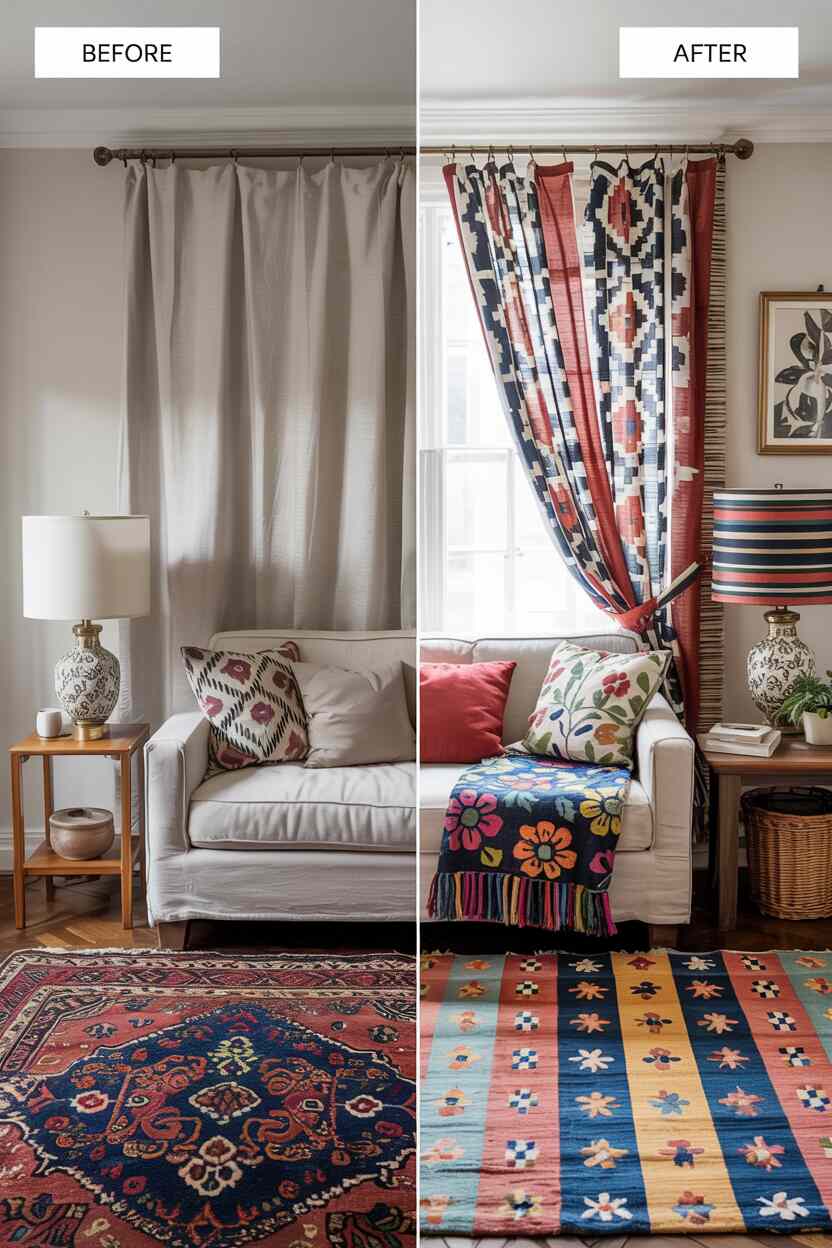
Layering Textures
Layering is essential to achieving the depth and richness associated with bohemian interiors. Incorporate burlap, silks, chenille, sisal, and crushed velvet—often all in the same space.
These varied textiles create tactile interest and contribute to bohemian rooms’ cozy, lived-in feeling.
Consider layering multiple rugs, throws, and pillows to build textural complexity that invites touch and enhances comfort.
The contrast between rough and smooth, soft and firm creates a sensory experience that defines bohemian interiors.
Start with a base of natural textures like jute or sisal, then add softer elements like plush throws and silk pillows.

Incorporating Natural Elements
Natural elements are crucial to bohemian design’s organic quality.
Introduce materials like wood, rattan, and jute to ground the space.
Adding abundant houseplants further enhances the connection to nature while bringing life and vibrancy to the room.
Consider displaying plants at various heights—hanging from the ceiling, placed on shelves, and positioned on the floor—to create a lush, garden-like atmosphere.
Combining different plant varieties adds visual interest while improving air quality and bringing the outdoors in.
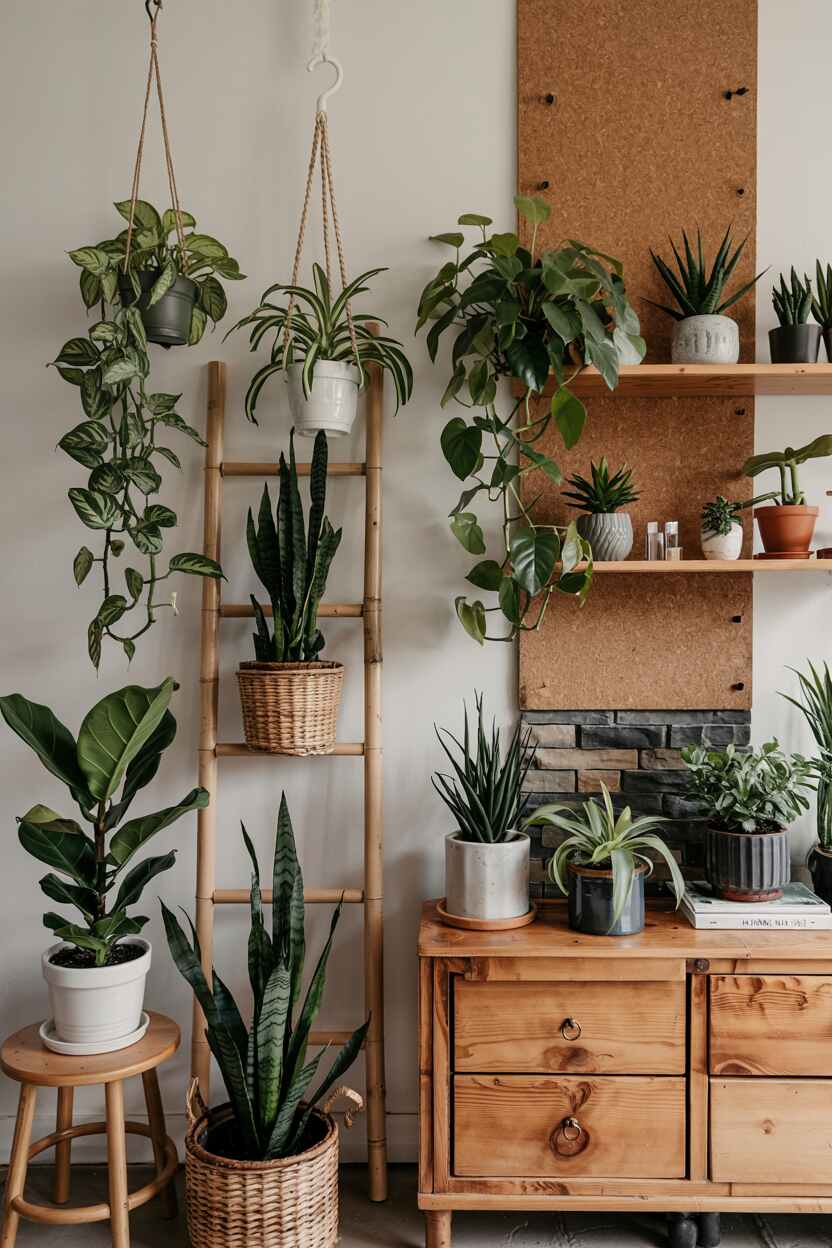
Finding Your Personal Style
At its heart, bohemian design is deeply personal. Incorporate souvenirs from travels, handmade artwork, family heirlooms, and other meaningful objects that reflect your experiences and values.
These personal touches transform a generically styled space into an authentic bohemian interior that genuinely represents its inhabitant.
Create displays of collected items that tell your story—perhaps shelves of treasures from different countries, walls adorned with art that speaks to you, or furniture pieces that have been in your family for generations.
The most successful bohemian spaces seem to have evolved organically over time, reflecting the life experiences of those living there.

Visual Inspiration Gallery
Bohemian Living Rooms
The bohemian living room embodies the heart of this design philosophy—a space for gathering, relaxation, and self-expression.
Key elements include comfortable, low-profile seating arranged in conversation-friendly configurations, layered rugs that define the space while adding texture and color, and an abundance of pillows and throws that invite lounging.
Personal collections, books, and art should be displayed prominently, and ambient lighting from multiple sources creates a warm, inviting atmosphere.
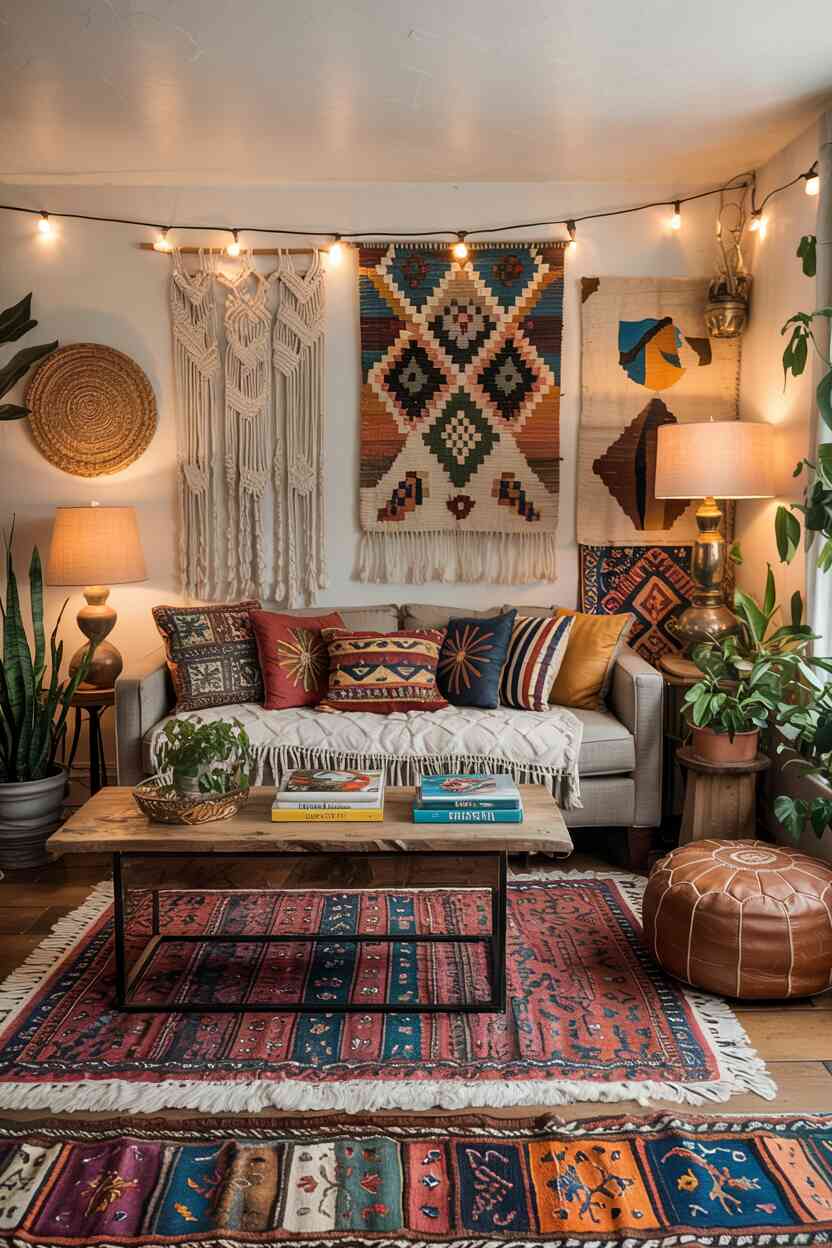
Bohemian Bedrooms
The bohemian bedroom should feel like a personal sanctuary—a space that embraces comfort while expressing individuality.
Essential elements include a bed adorned with layers of textiles in various patterns and textures, canopies or hanging fabrics that create a sense of enclosure and drama, plants that purify the air and add life to the space, and personal mementos that make the room feel truly yours.
Natural light filtered through sheer curtains creates the dreamy, ethereal quality characteristic of bohemian bedrooms.

Bohemian Dining Areas
Bohemian dining spaces celebrate gathering and community through eclectic, inviting arrangements.
Mismatched chairs around a communal table create an informal, welcoming atmosphere while expressing the bohemian value of individuality.
Layered textiles like table runners and napkins in diverse patterns add visual interest, while collections of ceramics, glassware, and serving pieces from various cultures enhance the global feel.
Plants and fresh flowers bring life to the table, and ambient lighting from candles or hanging fixtures creates an atmosphere for lingering conversations.
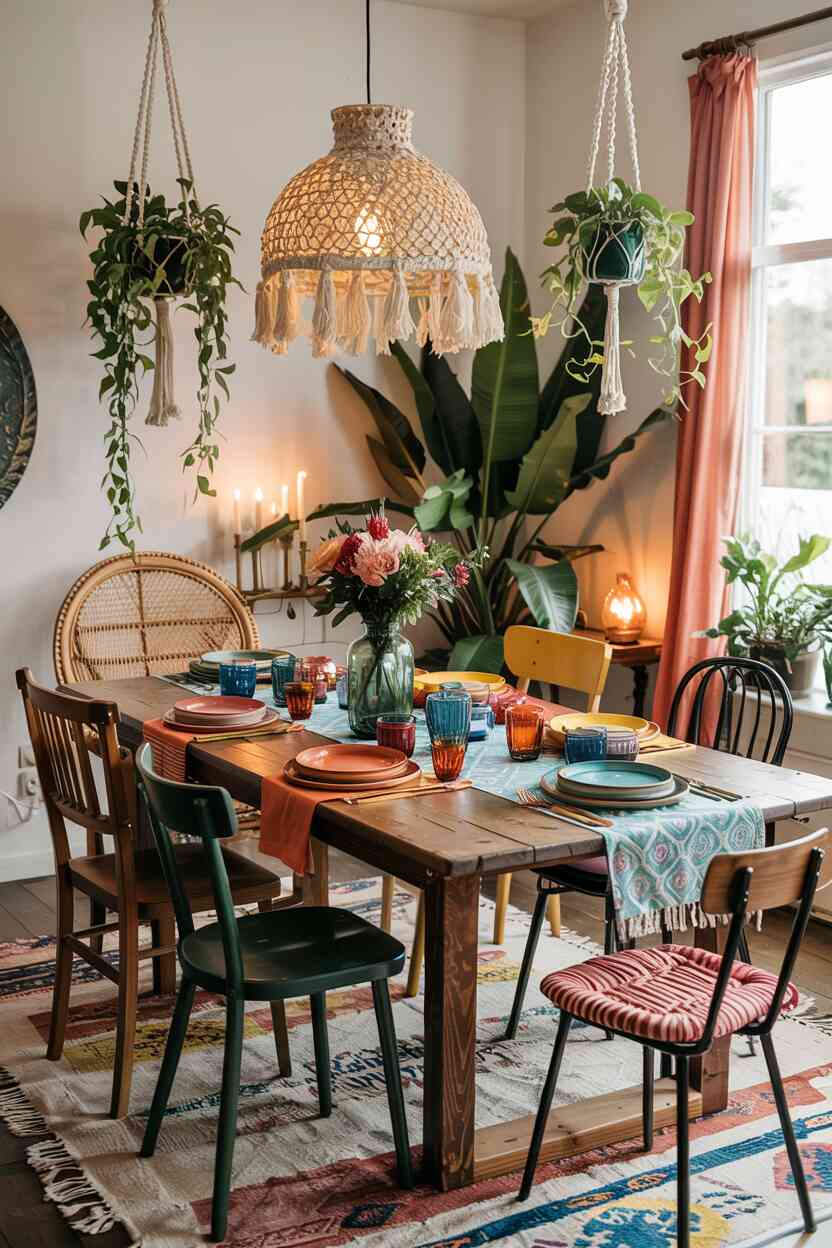
Bohemian Home Offices
The Bohemian home office balances creativity and productivity through thoughtful design.
A desk positioned to maximize natural light provides an inspiring workspace, while comfortable seating with added cushions and throws allows for extended periods of focus.
Personal collections and inspirational objects should be displayed within view to spark creativity, and abundant plants help purify the air while connecting the space to nature.
Storage solutions like vintage crates, baskets, and repurposed furniture keep supplies organized while adding character to the space.
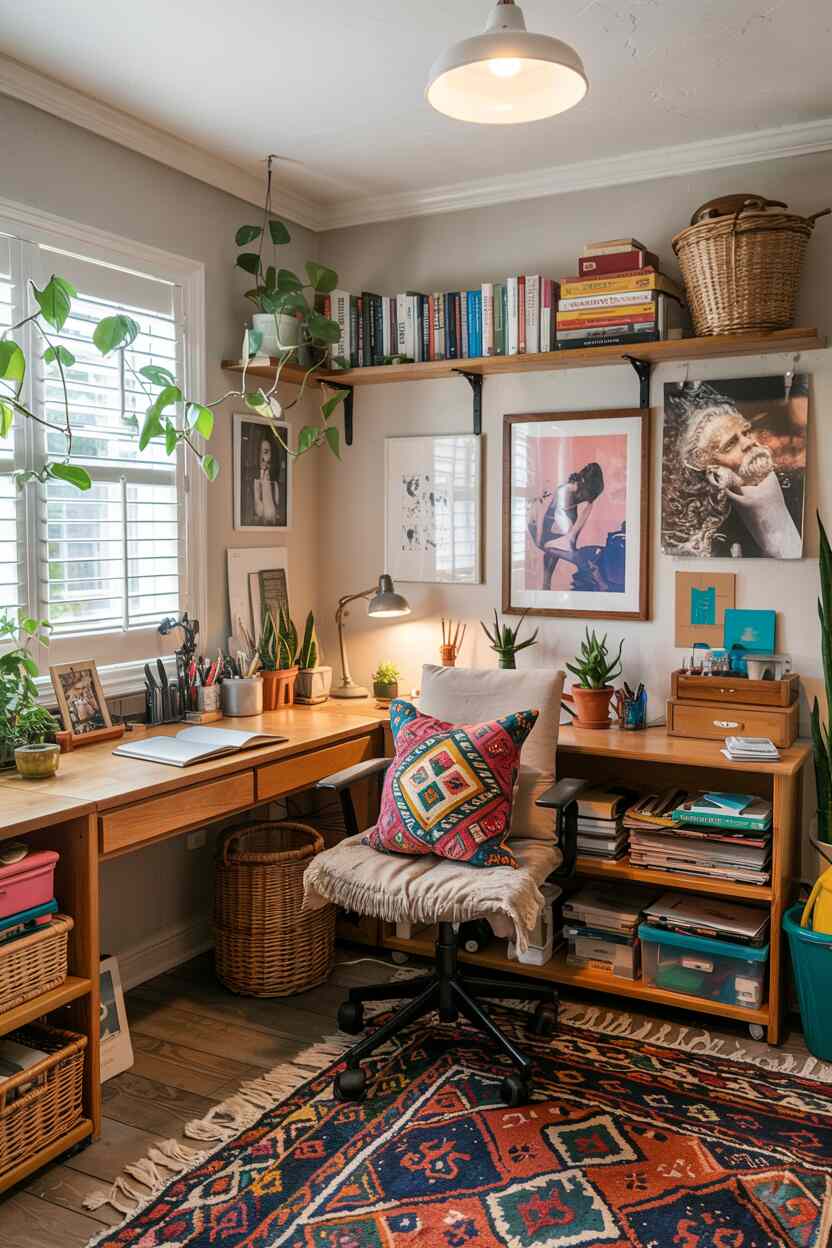
Bohemian Outdoor Spaces
Bohemian design principles extend beautifully to outdoor spaces, creating areas for relaxation and gathering that feel like natural extensions of indoor living.
Key elements include comfortable seating with weather-resistant bohemian textiles, ambient lighting from lanterns and string lights that create magic after sunset, plants in varied containers that add life and privacy, and decorative elements like wind chimes, bunting, or outdoor rugs that add personality to the space.
Creating distinct dining, lounging, and socializing zones makes even small outdoor areas feel expansive and versatile.

Conclusion
Bohemian interior design offers a refreshing departure from more structured design approaches, embracing individuality, cultural diversity, and artistic expression.
With its rich historical roots in nonconformity and its contemporary emphasis on personal expression, this style resonates with those seeking spaces that are simultaneously comfortable, inspiring, and authentically their own.
The beauty of bohemian design lies in its adaptability and inclusivity.
Whether you’re drawn to the more subdued Bohemian Zen approach or prefer the vibrant maximalism of traditional Bohemian spaces, this style accommodates a wide range of personal preferences while maintaining its characteristic warmth and expressiveness.
By incorporating the key elements of bohemian design—eclectic patterns, natural materials, vintage finds, and meaningful objects—you can create a visually striking space that tells your unique story through its carefully curated elements.
The Bohemian aesthetic remains relevant, aligning perfectly with current design trends favoring personality-driven spaces over cookie-cutter interiors.
This enduring style invites us to break free from conventional design rules and create homes that truly reflect who we are, where we’ve been, and what we value.

